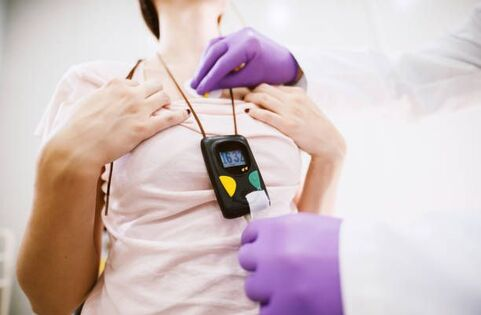
A Holter monitor is a small, wearable device that keeps track of your heart rhythm. Similar to an ECG (electrocardiogram). However, a standard ECG only records the heartbeat for a few seconds while a Holter Monitor will record longer to diagnose arrhythmias. Your doctor may want you to wear a Holter monitor for one up to 14 days. During that time, the device records all of your heartbeats. Your doctor uses information captured on the Holter monitor to figure out if you have a heart rhythm problem. You\'ll be asked to keep a diary of all your daily symptoms while you\'re wearing the monitor so that symptoms can be correlated with what is captured on the monitor.
A Holter Monitor is a small, portable device that is worn while you do your normal daily activities in order to monitor the heart over a longer period of time. You will be asked to sign a responsibility form to ensure that you will return the device on time and in working condition.Prior to being equipped with the Holter, we suggest taking a shower as you will not be able to shower during the period in which you are wearing the device (typically 24, 48 or 72 hours).
We do ask that you refrain from wearing perfumes, colognes or scented lotions on the day of your appointment. There are no pretest dietary restrictions and you should continue to take any prescribed medications as normal, unless otherwise advised by your doctor.
Test Process
Holter monitoring is a painless procedure. In preparation, a technician will place electrodes on your chest, arms, and legs. Depending, the technologist may have to shave areas of your skin (male patients) to help the electrodes stick. The technician will instruct you on how to record symptoms as they occur in a Patient’s Diary, which will be provided for you and requested by your technician when you return the device.
A Holter monitor is a delicate and expensive medical device. As such, you will be asked to sign a responsibility form to ensure that you will return the device on time and in working condition.Following an ECG, you may develop redness where the electrodes were attached.
This mild redness often goes away quickly and without treatment.
Patients are typically able to return to work or other activities immediately following an ECG. Please arrive 10 minutes before your test to register at the reception desk.